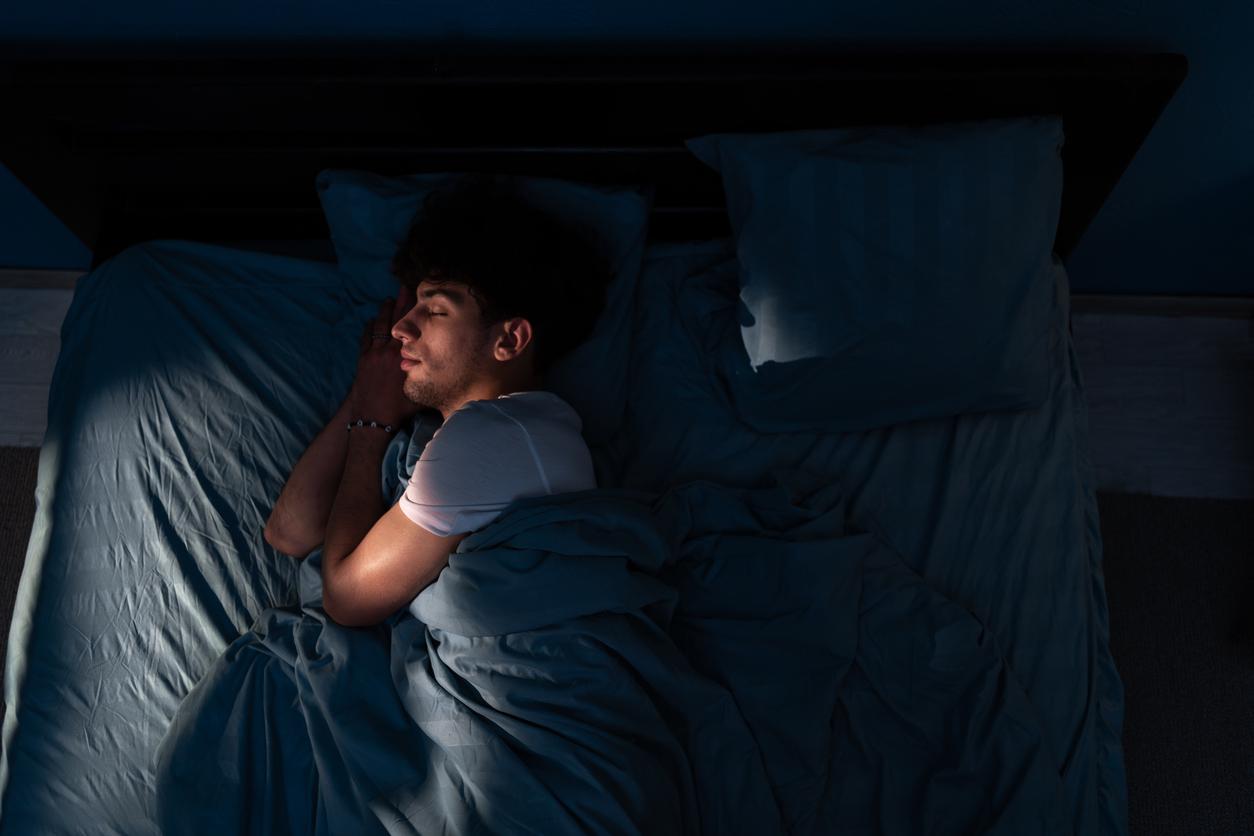Researchers have discovered that we are able to respond to information and verbal stimulation, during all phases of sleep, by contracting facial muscles, what scientists call windows of connection with the outside world.

- While a person sleeps, they can respond to verbal information by contracting their facial muscles.
- This means that there are windows of connection with the outside world during sleep, that is, times during the night when a sleeper can respond to stimuli.
- These phases are more numerous during paradoxical sleep.
Is it possible to communicate with a sleeping person? Yes according to researchers from the Brain Institute, in Paris. In their study, published in the journal Nature Neurosciencethey show that humans are able to understand spoken information while sleeping and respond to it by contracting their facial muscles.
Studying sleep to better understand exchanges
To achieve this result, scientists first started from an observation: wakefulness and sleep both include conscious and unconscious moments. “When [les mécanismes cérébraux de ces états intermédiaires entre l’éveil et le sommeil] are dysregulated, they can be associated with disorders such as somnambulismTHE sleep paralysisTHE hallucinationsthere feeling of not sleeping at nightor on the contrary to sleep with your eyes open“, explain Isabelle Arnulf, responsible for sleep pathologies department Pitié-Salpêtrière University Hospital Center (CHU)in a communicated.
During their work, the researchers used a more precise technique than brain waves. During the nap, the brain and heart activity, eye movements and muscle tone of the 49 participants were monitored using a polysomnography examination which allows a complete recording of sleep.
22 participants had no sleep disorder and 27 had narcolepsy, which is characterized by uncontrollable episodes of daytime sleepiness at any time of the day. The latter presented two major interests for the study: they often make lucid dreams and can easily and quickly enter a paradoxical sleep phase – the stage where lucid dreams occur – during the day,
“One of our previous studies showed that two-way communication, from experiencer to dreamer and vice versa, is possible during lucid REM sleep.specifies Delphine Oudiette, researcher in cognitive neuroscience. We now wanted to know if these results could be generalized to other stages of sleep and to people who do not have lucid dreams.”
Reactions to oral information and stimulation
As soon as they slept, the participants took a lexical decision test: a human voice pronounced a series of real and invented words. Participants had to respond by smiling or frowning to categorize them into one or the other of these categories. These exchanges are called windows of connection with the outside world by scientists.
“Most participants, whether narcoleptic or not, responded correctly to verbal stimulation while remaining asleep, develops Isabelle Arnulf. These events were certainly more frequent during lucid dream episodes, characterized by a high level of consciousness. Nevertheless, we observed them occasionally in both groups during all phases of sleep.“
Scientists have also shown that it is possible to anticipate, a little before they take place, the moments of these windows of connection with the outside world, these were notably announced by an acceleration of activity cerebral.
In the future, scientists plan to continue their research to better understand the timing of these connection windows, whether they are linked to sleep quality and perhaps exploit them to improve certain sleep disorders or facilitate learning.


















